Please can you give a brief overview of CliniCloud and your vision to bring the future of healthcare home?
The goal of CliniCloud is to bring healthcare home. For us, what that means is a patient-centered and patient-modeled healthcare system, where we focus on the fact that consumers want access to healthcare and to a doctor. We're building an ecosystem around the tools and the software to really enable that to happen as conveniently and as affordably as possible.
Our first product is a connected medical kit, which includes our non-contact thermometer, the world’s first digital stethoscope designed for consumers, and the CliniCloud app that integrates recordings from both devices. These are medical-grade devices that are intuitive and easy for anyone to use. The app also prompts users through a quick of full checkup.
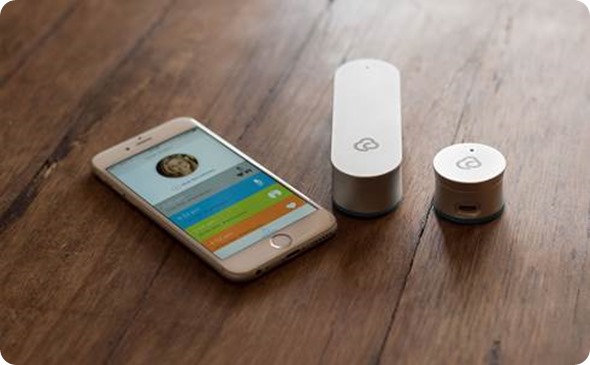
Users can record a timeline of their own health data and create a snapshot to share with a qualified doctor for diagnosis, including a network of on-demand professionals through Doctor On Demand.
What is really important here is that even though this is home-based healthcare, qualified health professionals are involved and engaged in the process, providing insights and advice on the next steps. We are enhancing the doctor-patient relationship, not replacing it.
As we grow as a company, the goal is to make the home into more of a clinic, so we're creating more tools that simulate that personal experience. We are also expanding the software to offer the consumer more in terms of its value independent of doctors, as well as integration with multiple different types of providers and automated diagnostics that do some of the heavy lifting in terms of triaging and telling the consumer how to make sense of the data that they need to be concerned about.
Why do you think today’s patients are starting to play a more active role in their own care and how does healthcare need to adapt to this change?
A couple of different factors are driving this change. One is that patients themselves are becoming more educated and want to participate in their healthcare in terms of the journey and management.
Secondly, the system is such that it's impossible to care for chronic illness sufferers and the aging population with the current healthcare resources. There needs to be a certain level of participation from patients in order to make the system cheaper, more effective and ultimately able to achieve better outcomes.
CliniCloud is really banking on the first one. We think that patients are becoming more educated and want to engage more in their healthcare, but as the system grows and realizes the cost burden and inefficiencies, there's also a kind of downward pressure.
I think the reaction that health systems need to have to this kind of movement into consumer- or patient-driven care, should be one of acceptance, but it's really about what one knows tempered with whether something is legitimate or not.
There are a lot of things people haul into healthcare that are more or less “snake oil”. I think validation by regulatory authorities and doctors is very important as this consumer- or patient-centered care moves forward.
One example is Fitbit, which does very well as a fitness gadget, but it is problematic as a health device because, intrinsically, step data isn’t that useful for a GP who is looking at a normal person. The GP thinks: “This person either exercises or does not exercise. I don't care how many steps they took."
What's been done with fitness recently, is very smart and the aim is definitely for it to move into healthcare. It is relevant post-surgery, for example, where the amount of movement is very important for tracking the progress of treatment. I think for this to happen, things must be of both consumer value and clinical value.

Why did CliniCloud develop a smart stethoscope and how does it work?
Hon and I were the first to invent the Smartphone-connected stethoscope for consumers, which we did back in 2012. The stethoscope really is the most powerful basic diagnostic tool and one that, until now, has always been in the hands of healthcare practitioners.
However, stethoscopes are really easy to use; they're just very hard to interpret. The mobile phone and the stethoscope together, really becomes a recording device that can store data and be used to educate people, which is amazing, but it can also be used to communicate diagnostic information to doctors who may be remote and who can be on demand.
Those doctors can then interpret the information and make diagnostic decisions. For example, with things like respiratory sounds, where a person may have pneumonia, bronchitis, croup, the common cold, asthma. For most common conditions, if a GP has a general consultation with someone, a stethoscope is a key part of the process.
For us, this is very important and the more interesting thing for Hon and I, is that we think there are a lot of very important diagnostic markers in stethoscope sounds. Since they're complex markers and complex sounds, there's a lot of potential for us firstly, to make more of some of the diagnostic processes, and secondly to potentially find signals and information that people don't really recognize even today, with the amount of data that you're able to collect. No doctor would be able to compare two stethoscope sounds over time because they just wouldn’t remember them, but if they had data, it would be entirely possible.
That's what our hope was for the stethoscope and it really is the same when we think about the thermometer and other things that we have down the pipeline. It's about expanding the reach of diagnostic services at home and expanding the data sets needed to complete diagnosis.
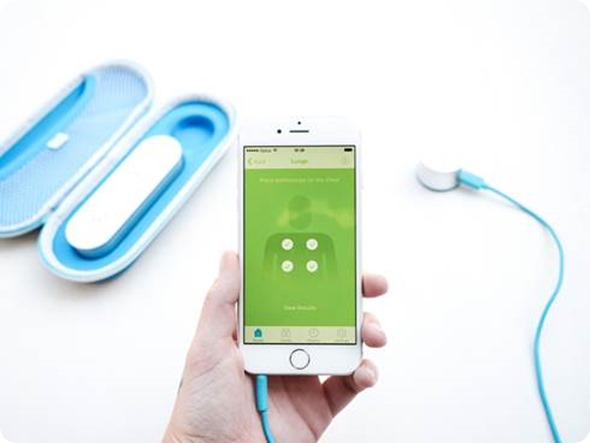
How does the app help the user to operate the smart stethoscope? Can CliniCloud be used without a Smartphone?
The app is central to the experience. Although the stethoscope is very easy to use, it's not exactly something that patients or consumers are familiar with. The app itself acts as a guide in terms of the way you place it and how you use it.
After you catalogue and record it, you can tag the position it was recorded from, which is very important information. Whether it's from the back, the front, or the upper or left or right, is very important information. For example, if a patient has pneumonia, it’s usually lobar, which means consolidation usually first occurs in one lobe and sounds may only be in that lobe.
The other important element is that the stethoscope really isn't very useful by itself as a device; it's only useful when you have interpretation, when you have algorithms, the integration of telemedicine, and when there's a doctor on the other end to interpret it. That's part and parcel of what the app offers.
The stethoscope could potentially be used without the app in chronic care settings, but not in the sense of a smart stethoscope.
Can the health information generated be shared with a physician? Is the data secure?
Yes, it can be shared with a physician. The beauty of the CliniCloud app and the software stack is that everything is stored in the cloud, meaning sharing it is super easy.
We usually share in two ways. One is that all the data is HIPAA compliant, EU private and super secure and we have a deep linking system where the CliniCloud account and a partner account are merged and the data can be seen in this data flow. A physician on the other end can basically pull out a patient's history, as they would from an electronic health record, or they can pull out select records that the patient has referred onto them, listen to the stethoscope sounds and review the vitals and so on.
The other way is for people who aren't deep linked into the system, which is the case for the vast majority of people. If a patient wants to share something, they essentially press share and we generate a custom URL to provide a link that the physician can click on at their end. That link pulls a specific record that the patient wanted to share and displays it on a single webpage where the doctor can review the information.
The page does not contain personal information, only the actual recordings such as temperature or lung and heart information.”
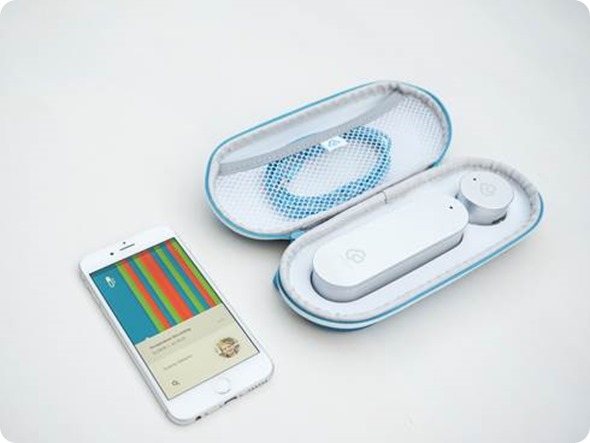
What reception has CliniCloud received and what impact do you hope it will have?
We've only started shipping the product this year and it's been hugely popular.
I think people like the concept of home-based healthcare and it's really up to us over the next months and years to really spread the message and evangelize this whole idea of being able to take care of yourself.
The telemedicine, the remote monitoring and diagnostics, the actual video consults with a doctor are becoming increasingly popular in the US. A startling figure of something like 80% of employers will offer telemedicine to their employees over the next couple of years. I think right now it's about 50% or 40%. Most people in the US get their health insurance through their employers, so it's going to be big going forwards, in terms of actual adoption.
Right now, even though people often aren’t aware of it, with devices like ours and the current interest in home-based healthcare, it's going to be kind of a major trend going forwards, in terms of how the healthcare infrastructure works.
How important is measuring temperature for diagnostic decisions and how did this influence your choice to develop the non-contact thermometer?
Temperature is very important. For a physician it can determine which clinical pathway they go down, in terms of whether it indicates infection or not. It doesn't guarantee that temperature is a sign of infection, but it's quite likely.
We thought about how it's not only a very important data point, but also a device that people are familiar with, especially on a consumer level. They can think "Well, if I'm getting a smart medical kit, then the first and only medical device I know how to use is a thermometer."
I think that's very important. It's applicable to all ages, just as the stethoscope is, whereas if you think about more niche devices such as a blood pressure monitor, it’s really only for the elderly. Similarly, there are devices for children that wouldn't apply to the elderly. All we thought about was what the next most important tool is and this thermometer really features quite heavily.
In terms of it being non-contact, we thought about who would use this at first. It's a new, shiny, smartphone-based tool and really appealing to those willing to participate in their own healthcare. We thought about millennials and millennial parents, in particular, as our prime target or target market.
As much as this would be useful to elderly people, a lot of them struggle to use smartphones and the idea of self-care might not catch on just yet.
Please can you talk a little bit more about the fact that the thermometer is non-contact? Was that difficult to develop?
Non-contact is really important for parents simply because kids move and don't like things being put into them. Being non-contact makes the device convenient and hygienic, so it's a pretty good differentiator. It also means parents don't have to wake up little ones if they’re sleeping in order to check their temperature.
Non-contact, forehead scanning temperatures are pretty common these days; we didn't invent that technology. What we did do, is put a Bluetooth chip in it and make it wireless, so that it just goes straight into an app.
You see people with forehead scanners at airports a lot, such as during the SARS outbreak and the Ebola outbreak. The technology's quite proven.
What are your innovation plans moving forwards?
There's a lot in the pipeline. In general, it's about expanding our product portfolio to have more useful tools that we think could be applicable for the home healthcare setting, as well as building on our software platform to introduce things that are truly innovative.
We would like to develop products that would both add value to the user and the family unit, by being able to give more insight as well as ground basing the scientific stuff, the automated diagnostics and the pattern recognitions. I think that, for me, is at the center of the future of healthcare.
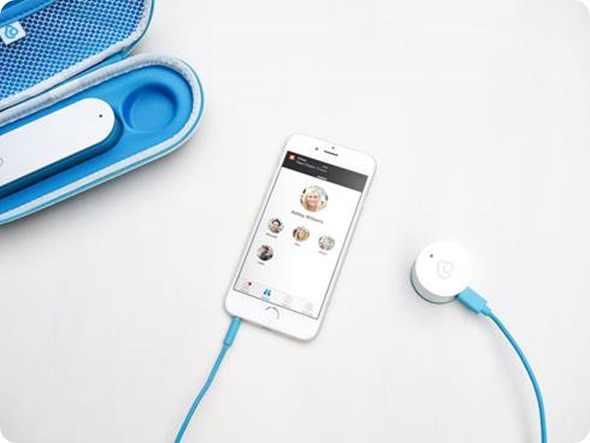
Do you plan to offer languages other than English?
Yes, it's not difficult at all.
Are the devices available globally?
Our devices are available globally from our website, but we operate primarily in the US and are stocked through Best Buy. Launching in other countries is definitely in our plans.
The devices are class two medical devices and CE-marked, so they are approved for sale in Europe and in Australia. They are TGA approved.
What do you think the future holds for healthcare devices in the home?
I think it's very promising. A lot of what we talk about in home healthcare, remote health care and being able to have a lower cost model of healthcare, all depends on the home being more like a clinic and certainly more equipped to deal with more complex issues.
There's a great need for tools at home. If healthcare devices are going to be in homes in greater volumes, they must be intuitive enough for anyone to use them easily, with confidence. This is a huge focus for us at CliniCloud.
Where can readers find more information?
CliniCloud
About Dr Andrew Lin
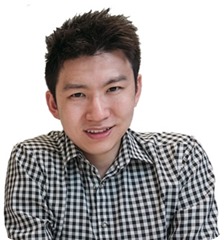 Dr Andrew Lin is an Australian entrepreneur, physician and the co-founder of health tech company CliniCloud.
Dr Andrew Lin is an Australian entrepreneur, physician and the co-founder of health tech company CliniCloud.
Based in Melbourne, Australia, Andrew studied medicine (Bachelor Medicine/Bachelor of Surgery) at the University of Melbourne before becoming a practitioner. During his degree he spent one year at Cambridge University conducting research on multiple sclerosis treatment.
Andrew is passionate about empowering people to take a more active role in their healthcare while also providing doctors with the tools to diagnose and treat patients as efficiently as possible.
At the age of 27 Andrew decided to swap his scrubs for software development, launching health tech startup CliniCloud along with his university friend Dr Hon Weng Chong.
Originally CliniCloud was born as StethoCloud, for which they were first runner-up for the Microsoft 2012 Imagine Cup. They received a $75,000 grant.
CliniCloud recently secured $5m in funding from major players like Tencent and Ping An Ventures.
Through CliniCloud, Andrew and Hon are currently working with a number of global medical institutions on research projects, including University of California (UCSF) Medical Centre and Melbourne Royal Children’s Hospital.